Trapped in New Zealand (#nzhellhole, am I right?), we must consider our adventuring options nearer to home. The primeval West Coast beckons, reminding me that I have not yet explored all its rainforested ravines and remote beaches.
So here we are this Easter weekend, ensconced at Glow Worm Backpackers in Franz Josef township, and we don’t even need to take the car for this first foray into the wilderness. For we are taking the track from the edge of the town into the mountains, to explore a rock tunnel of Victorian vintage.
Dad and I started out from Cowan Street up a gravel trail which sloped gently through the forest. The morning sunlight lit up the moss festooning the branches as the morning dew turned to steam. Away from my couch at last, I felt more alive than I had in quite some time.
We were very soon given the choice to visit visit either the Tatare Tunnels or Callery Gorge. I of course chose the tunnels, because tunnels are awesome.

Fantails followed as we wended through the trees. At first the path was gently graded but the last wee stretch consisted of narrow steep switchback which tested our quarantine-softened constitutions.
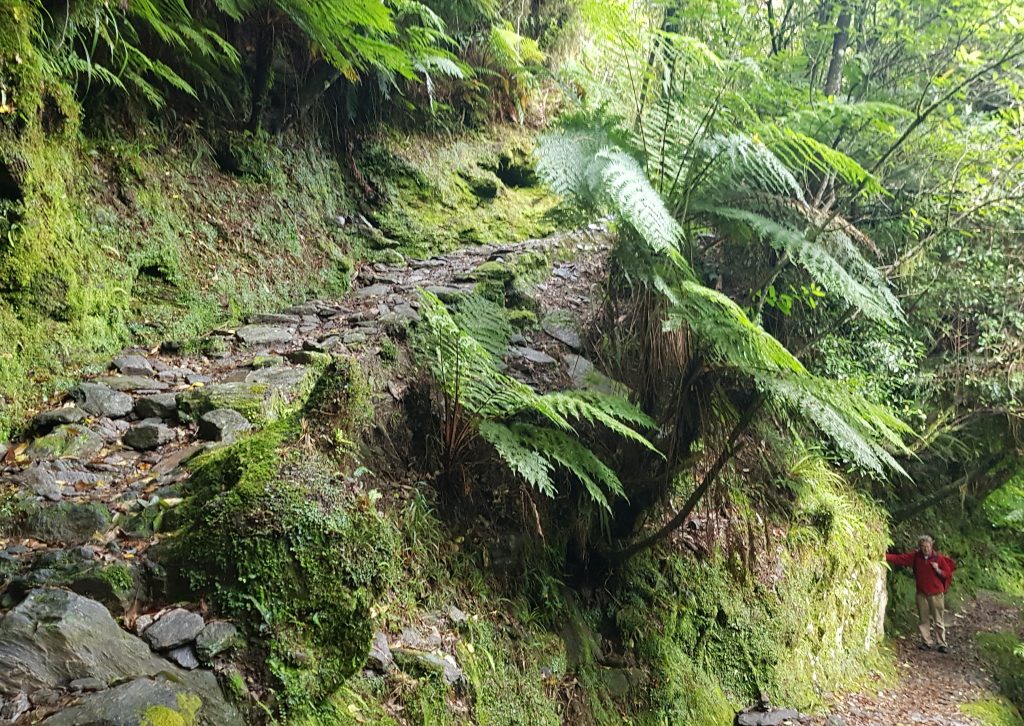
A warning roar alerted us to the rushing Tatare Stream below, which seemed more to me like an impressive river. Finally we reached the picket fence that indicated the entrance to the vaunted tunnel.
This is the remnant of an ambitious 1897 project by the Waiho Hydraulic Sluicing and Water Race Company to bring water from the Tatare River (at that time apparently known as the “Totara River”) to a mining claim at the junction of the Callary and Waiho rivers, thus providing the running water necessary to enable a sluicing operation for extracting the valuable gold presumed to be waiting in the old river terraces.
Like many ambitious mining operations of the period, it was never very successful, and ultimately closed down in 1908.
But that wasn’t the end for this water scheme, as the late 1930s saw it re-purposed to supply power to the Graham brothers’ Glacier Hotel. In fact, the Grahams had even grander plans than that, hoping that the scheme could supply power for an “aerial railway” that would open up access to year-round ski fields surrounding the Franz Josef glacier.
The Graham brothers (Alec and Peter, plus their unsung sister-in-law Rose) were instrumental in promoting the budding West Coast tourist industry. Their legacy is recorded in several place names about the area – Grahams Saddle, Alecs Knob, and Mount Graham near Mount Cook, but sadly little trace now remains of their once-impressive hotel after it burned down in 1954.
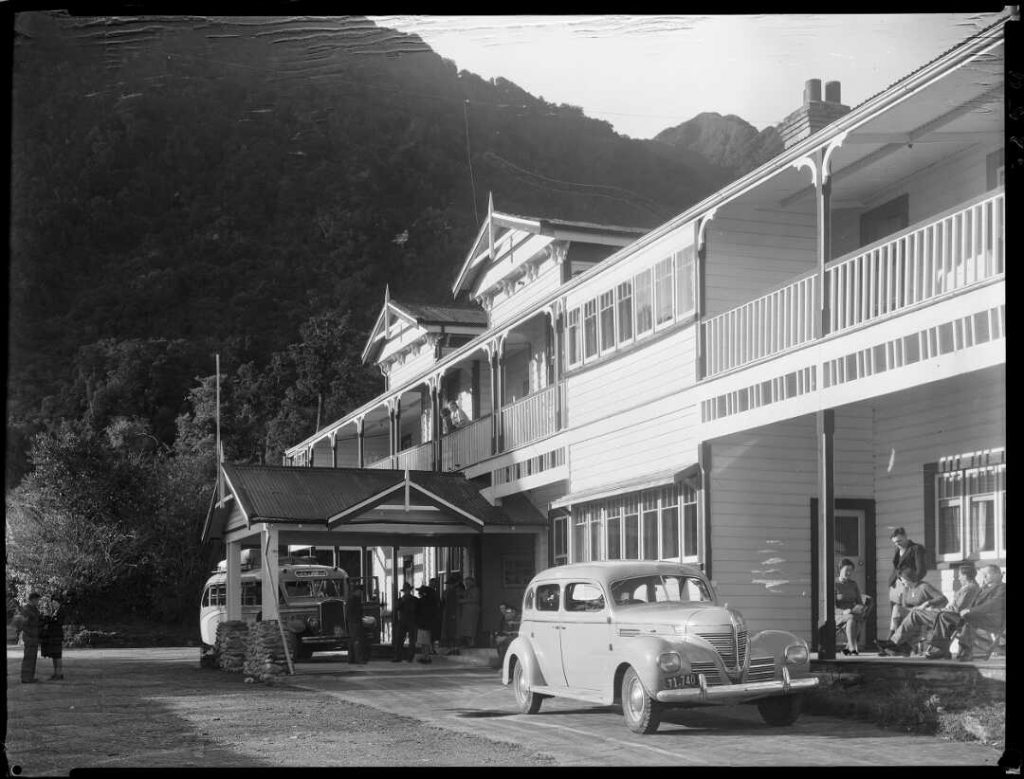
Remarkably, this power supply was in use for the town of Franz Josef (previously called Waiho) until 1982, when a slip crushed part of the powerhouse and the West Coast Electric Power Board decided to let the main grid serve the town rather than repair the Tatare power house.
With the historical reflection over, it was time for adventure!
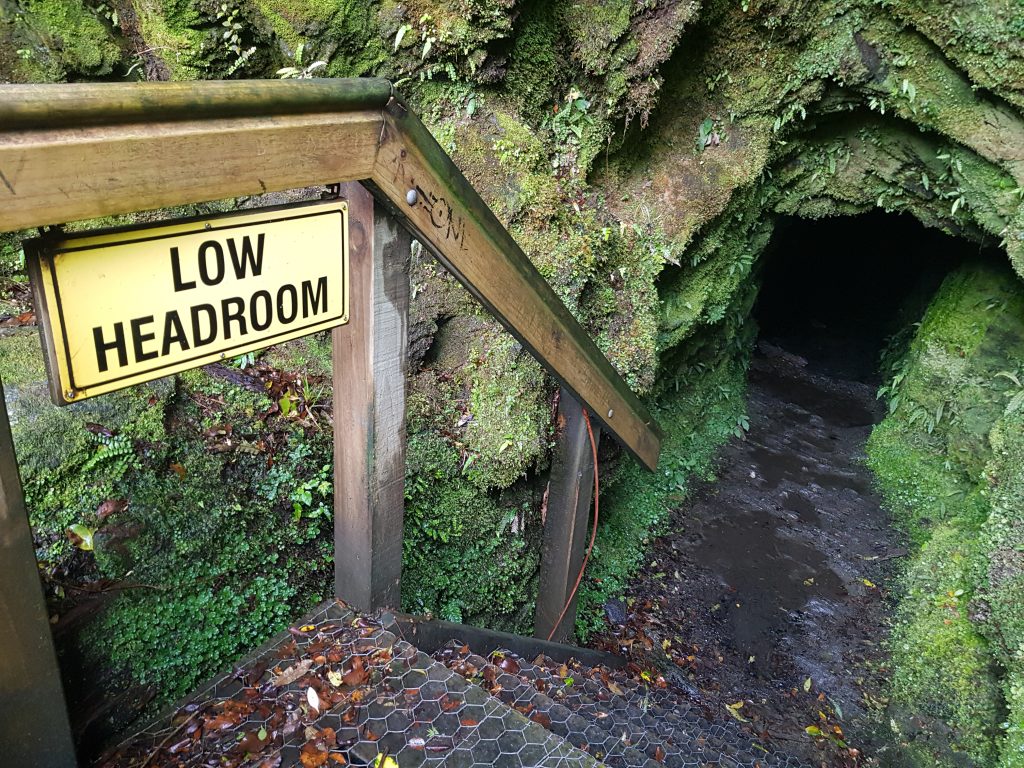
I ventured in, wimpy phone torch my only light, while Dad wisely chose to stay behind. Water flowed freely through the tunnel and I soon gave up keeping my feet dry. I splooshed further into the narrow crevasse, light behind me dwindling while nothing but pitch darkness beckoned ahead.
Silvery patches glistened on the walls, reflecting my light back at me, while from the ceiling the lights of glow worms provided my only company.
As the misty darkness pressed claustrophobically about me, I found myself transported back to a world I’d inhabited in my childhood, that of my favourite PC game, Ultima Underworld.
Suddenly I was imprisoned once again in the catacomb abyss, navigating my way through the dark and dangerous labyrinth, praying only that my light would not falter and leave me at the mercy of its monstrous denizens.
Woe upon me! I thought. Will I ever find the princess and be freed from this nightmarish underground?

After what seemed like an eternity (the best indication I could find for the length of this tunnel was 342m) I finally spied light up ahead. I rushed headlong, only to discover the exit boarded up – I was trapped! There was a sign nearby, which read:
We attacked the entrance with all sorts of tools, but it gave not a hair. It simply cannot be breached. Hence we have resigned ourselves to die in this hellish pit.
No wait, that’s my imagination again. In actuality, the sign explained that the rest of the track was closed due to a structural issue with the aqueduct beyond, which meant the rest of the walk and the second tunnel was no longer safe to access.
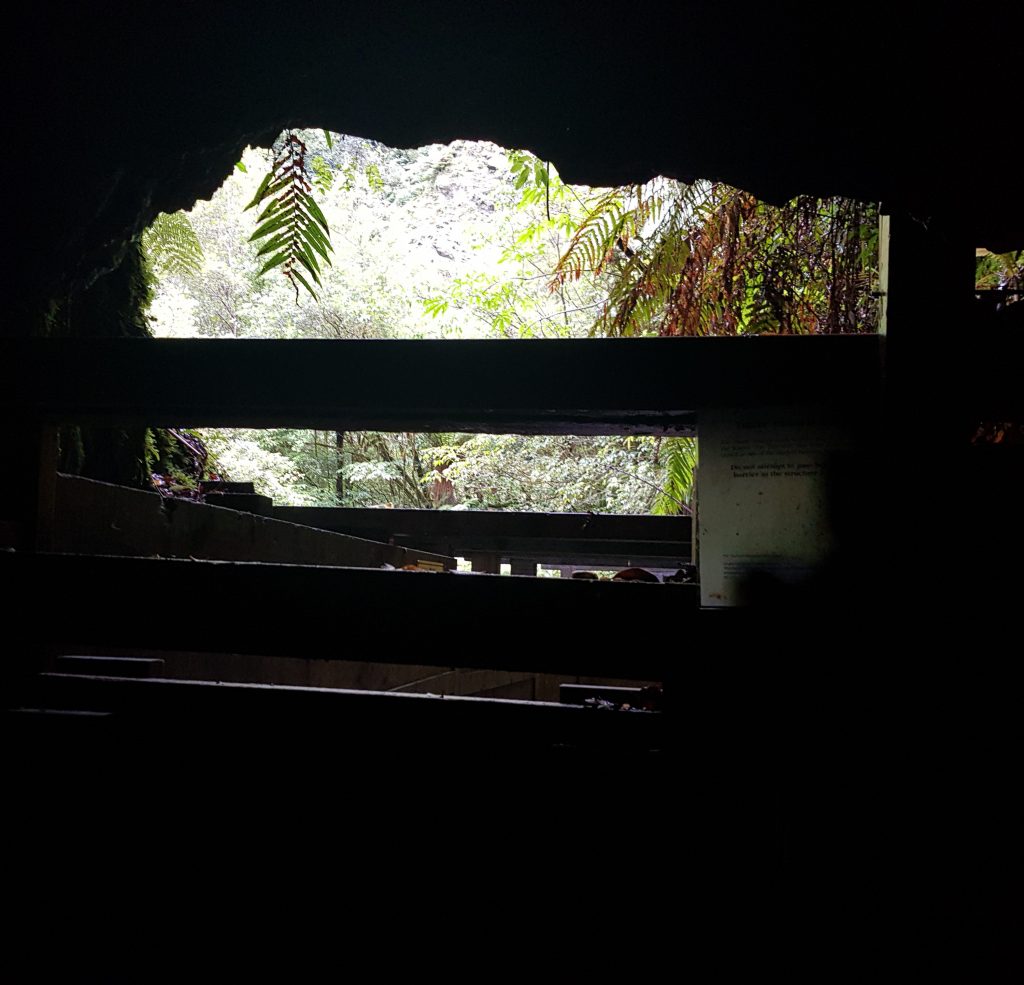
So I had to go back the way I had come, splashing my way through the darkness until I rejoined Dad back on the light side.
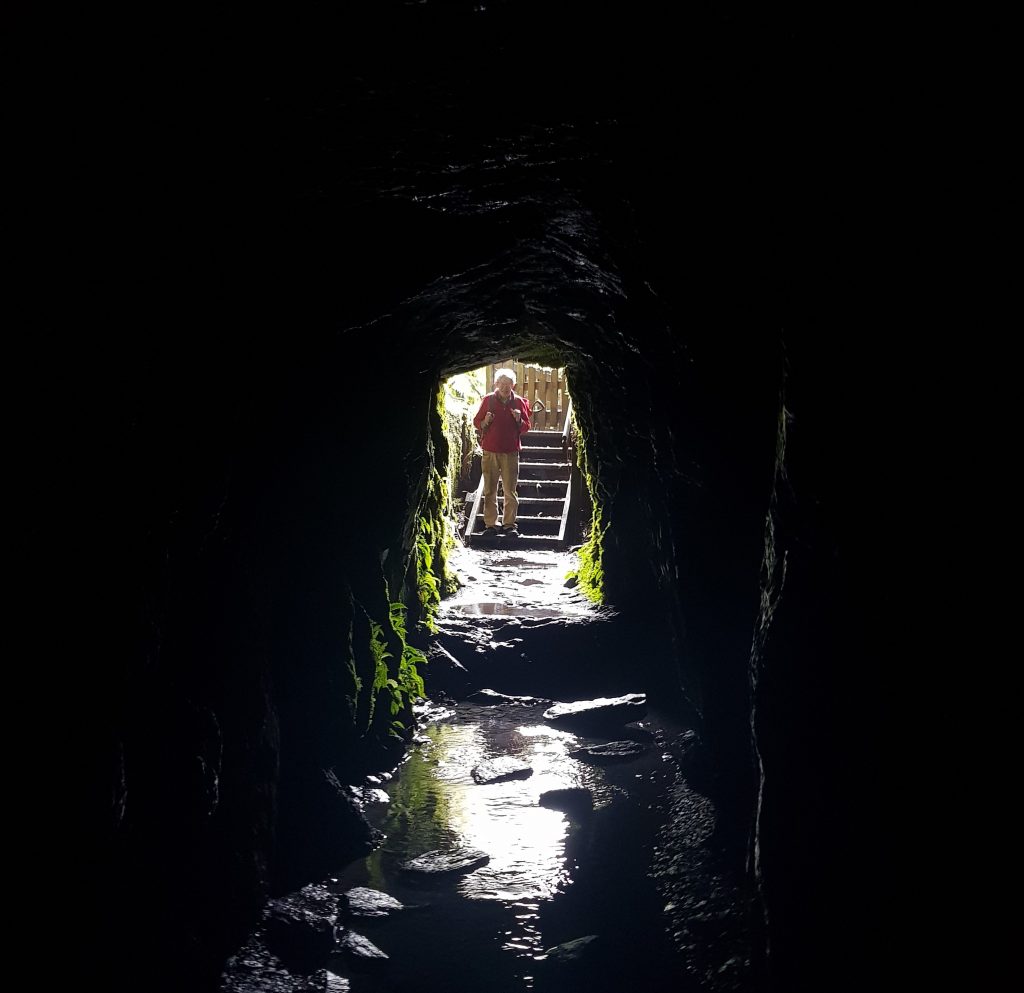
Having escaped the abyss we returned to our accommodation to shed our soaked footwear and celebrate a 2021 adventure well completed. Perhaps, we hoped, the first of many more!
References:
Page 3 Advertisements Column 2 West Coast Times, Issue 10473, 18 January 1897, Page 3
Interpretative signage onsite
Untitled Hokitika Guardian, 26 July 1938, Page 4
The Monday Extract: The loves and tragedies of Dorothy of Franz Josef by Cheryl Riley



